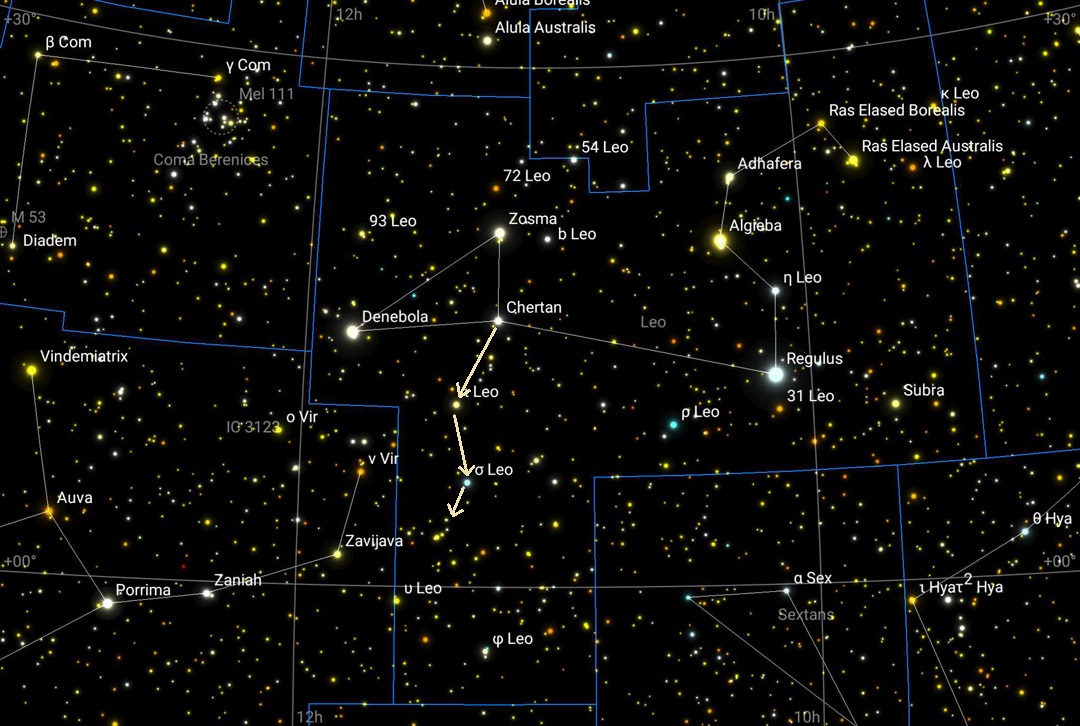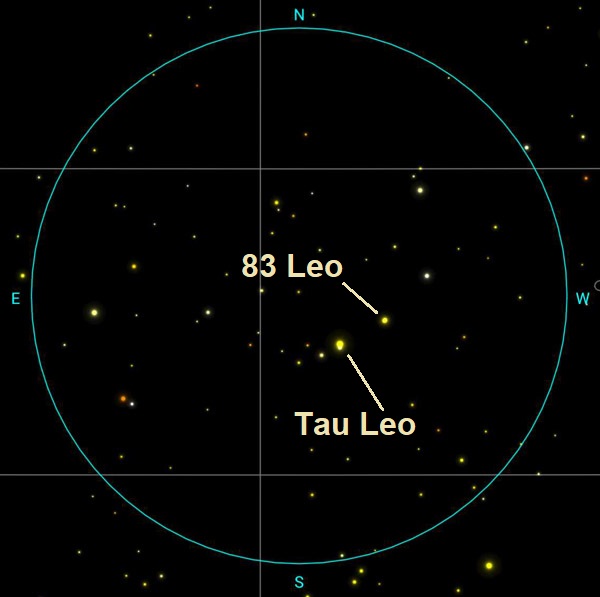April and May suburban skies lack bright bounty for binoculars because the Milky Way is mostly out of sight as we look upward out of the spiral disk of our galaxy, rather than into it as we do in winter and summer when it is high overhead. The Milky Way is the visible disk of our whirlpool galaxy. Well, visible from darker skies. It is obscured by light pollution in suburban skies, but its clusters, brightest nebulae, and rich star fields can be seen with binoculars. The iris shown above is from my yard — an emblem of May. And the raindrops are emblematic of this May in particular, unfortunately for astronomical pursuits. 😕
Spring is a season for galaxies, which are more easily seen looking out of our galaxy than into its disk, the dust of which hides them from view. In fact, the plane of our galaxy was dubbed the “Zone of Avoidance” because it apparently does not contain galaxies. Before it was understood that they are merely obscured by galactic dust, their lack in part of the sky was an argument for galaxies being local nebular phenomena by those who believed our own galaxy was the entire universe. Otherwise how to explain that they are not spread across the sky? (Which, of course, they are.) Many galaxies can be readily seen with binoculars and binocular telescopes but such observations require dark skies. Only a small number of the brightest galaxies can be detected in light polluted skies, so pursuing them with binoculars from a suburban yard quickly becomes an exercise in frustration. (It’s not much better with a telescope.)
What to do?
Double stars to the rescue! (Not to mention carbon stars, variable stars, asterisms, and such amusements as patrolling IAU constellation boundaries.)
A Cloudy Nights friend recently mentioned observing Tau Leo, which piqued my interest. (My interest in binocular double stars is easily piqued. 😉) Leo is a classic suburban spring sky disappointer — home to five bright Messier galaxies, M65, M66, M95, M96, and M105, which are nearly impossible to see in light polluted skies, even with a binocular telescope like the Oberwerk 127XL. (Believe me I’ve tried.)

Chancing upon Phil Harrington’s May Binocular Universe column in Astronomy magazine, titled “Double Duty,” I recognized the inspiration for my CN friend’s foray into the southern reaches of the constellation Leo. “Now, head to the constellation of Leo the Lion,” Phil says. And then proceeds to describe Tau and 83 Leonis. Shown in the chart above is Phil’s recommended zig zag course to the Tau Leonis prize, from Chertan to Iota Leonis, then to Sigma Leonis, and then on to Tau.🙂
The doubles stars STFA 19 (Tau Leo) and STF 1540 are adjacent to each other in a graceful arc of stars that is one of the binocular glories of the constellation for suburban observers. Not to be missed!
STFA 19 / Tau Leo
11h27m +02*51′
5.05/7.47 sep 89.2″ pa 181*
Optical double star
Gorgeous! White gold primary with a pale blue companion at a generous distance.
STF 1540 / 83 Leo
11h26m +03*01′
6.55/7.50 sep 28.6″ pa 146*
Physical double star
White primary with a sand colored companion at a comfortable distance. What a fine field! A fantastic view with the 20×70 ED Ultra. Also resolved with the Oberwerk 12×50 SE.

Phil also describes a Double Cross asterism extending to the south east of Tau, shown in the chart below. The other components that make up the Double Cross are optical pairs of stars, not listed in double star catalogs. It is an enjoyable view from my suburban yard with mounted 10×50 binoculars. The FOV ring is 6.5 degrees, typical of 10×50 binoculars. The blue line on the east side of the FOV is the constellation boundary with Virgo.



Took my binoculars and my bike and rode out to one Bortle level lower; unfortunately the mosquitos arrived in force so my observing session was cut short. Before I gave up though, I managed to split these two with my 8x42s – 83 Leonis needing my binoculars braced on top of my saddle. The Double Cross is a very fine binocular asterism on top of it.
Now I’m off to throw out that clearly insufficient bug repellent.
Well done, Eric! 👌Observing from home in the summer I use an electric fan, which works a treat. Mosquitoes are not strong flyers and even a light breeze keeps them off. For darker sites I wear a light long sleeved shirt and summer weight slacks treated with Permethrin. Treated socks too. Plus then dab a bit of Deet repellent on my neck and face. And backs of hands. Oh, and I removed the bill from a baseball cap and wear that too. Also treated with Permethrin. I don’t see going for a bike ride with that getup though. 😏